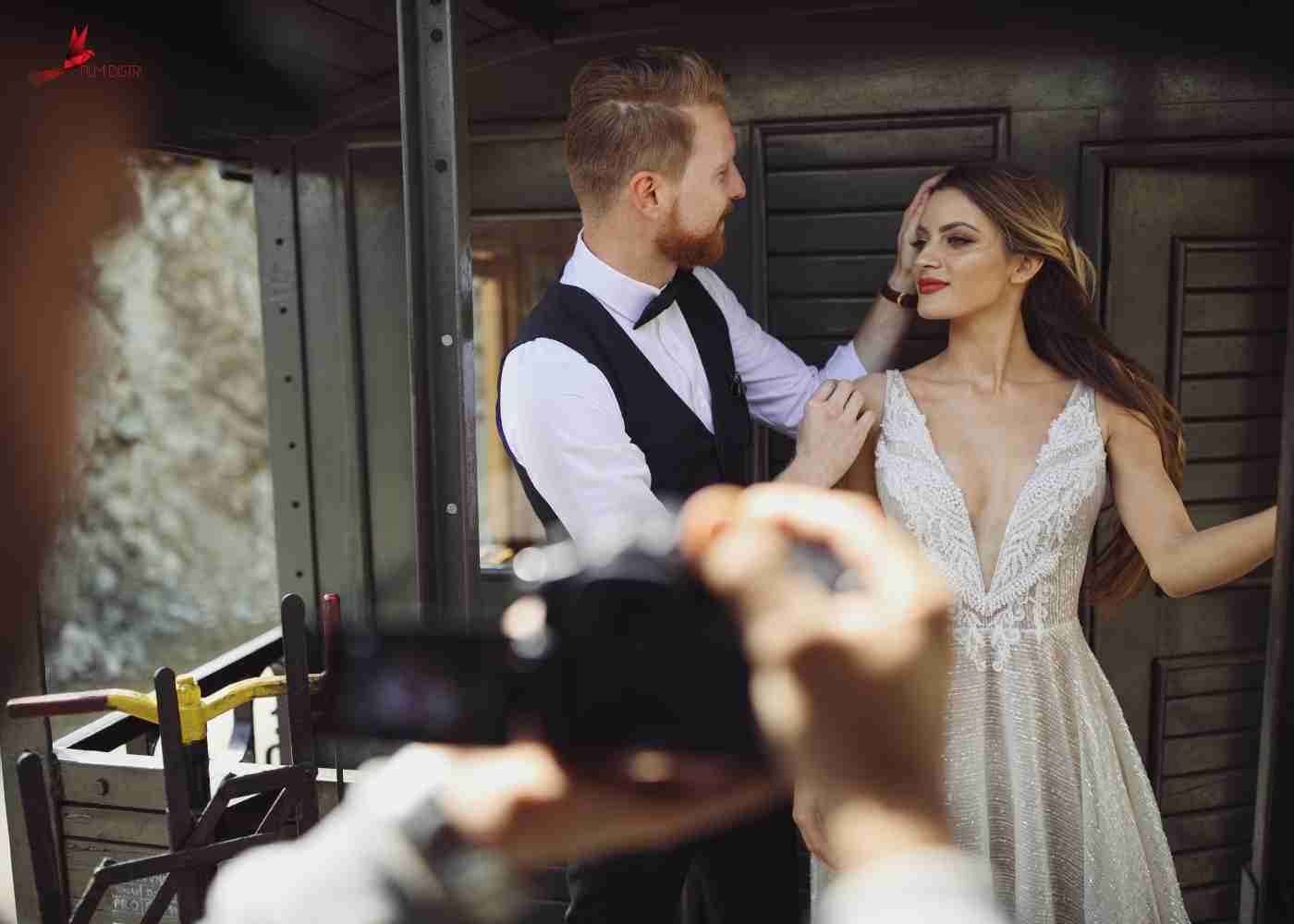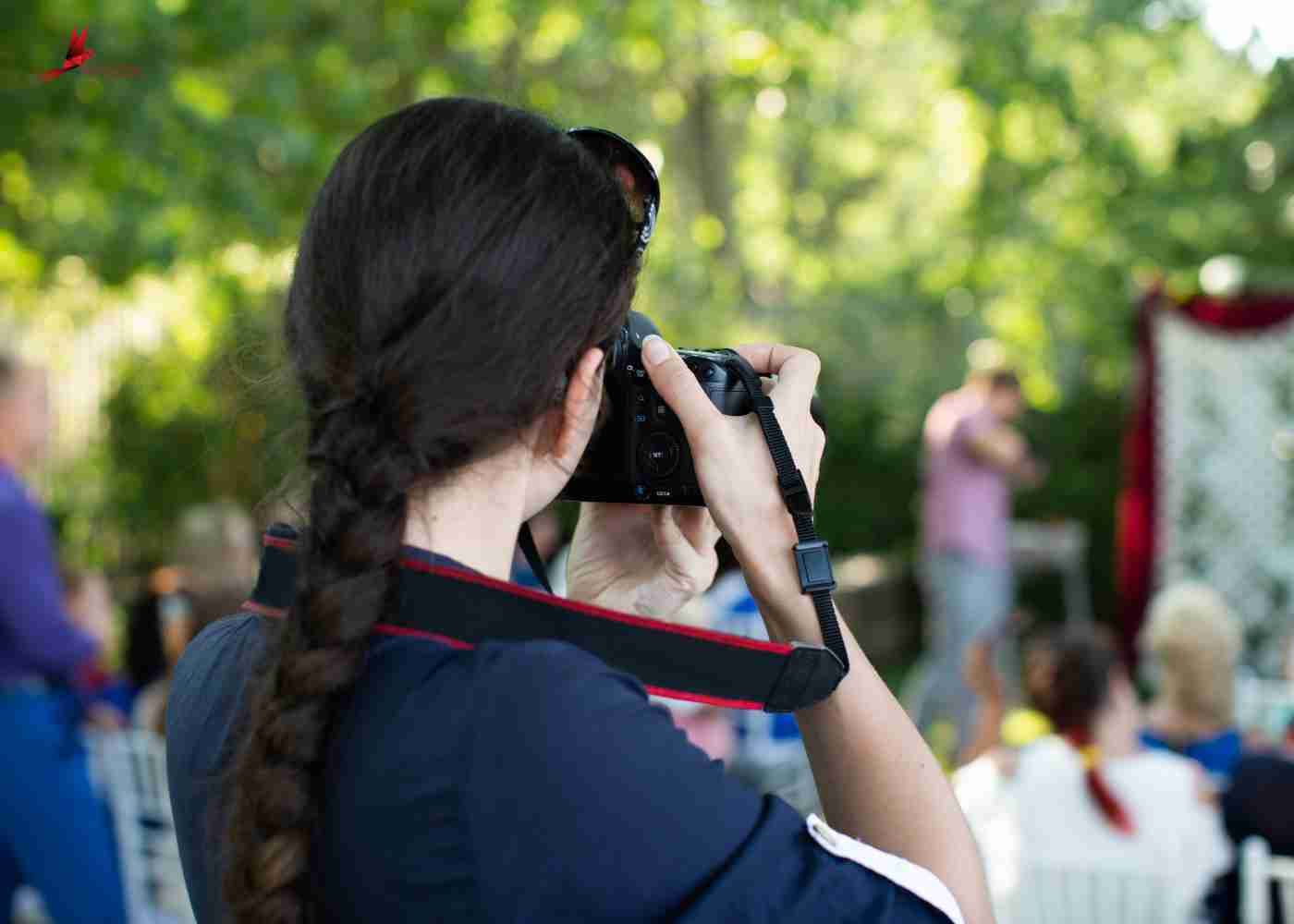One of the most important days in a couple's lives can be their wedding day. Typically, they will only have their recollections, photos, and a wedding film to help them remember the significant event. For the latter, you should try your hardest to record an incredible, cinematic wedding film if you are hired to do so.
Ten suggestions that will assist you in doing this have been provided in this post. With these ten suggestions, we'll look at how to get ready, what to pack, and how to shoot weddings. Let's start now.

1. Communication is important
Communication is essential if you want to be a successful wedding videographer. Communication with the main wedding participants, starting with the bride and groom, is required.
You should meet with the engaged couple well in advance of the special occasion to ask them questions and obtain their input on the video's subject matter. What do they have in mind for the video? What essential photos do they desire? Do you need to be prepared for any surprises?
These are only a few sample inquiries that you might want to make. Nevertheless, what you really need to know is what the couple's expectations are for the video.
2. A Shot List of Necessary Shots
You'll know more about what you need to buy once you've met with your wedding clients. Being prepared and getting the "must-have" photos are key components of effective wedding cinematography, as is having an eye for candid moments. Using solutions like StudioBinder's shot list software can help you best prepare for the big day when it comes to the latter.
A sample shot list for a wedding photographer is provided here. You can even download a copy of the list for later inspiration by clicking the image to view the full list.
You can make sure you haven't overlooked any of the shots your clients will be expecting by consulting a shot list. There are some really important moments you can't afford to miss when shooting a wedding. These include the big kiss, the bride's walk down the aisle, and the groom's response. There will be "must-have" photos to take during wedding preparations as well.
Making a shot list is an excellent idea to have just in case, as it will help you picture and recall the "must-have" photos you need to obtain. Even if you don't refer to the shot list on the wedding day, having it will still be helpful.
3. Marriage is a love story.
A love story is one of the nicest ways to view a wedding film. You will be guided and directed by the plot while you edit and shoot the video if you keep the narrative in mind. The opening of a video can generate tension by showing stunning views of the wedding preparations.
Making a wedding mood board is one way to align yourself with your clientele. In this approach, the big picture can be decided upon and set in advance.

4. Be ready for any lighting situation
Being ready for all lighting situations is one of the more equipment-focused suggestions. If you are shooting in the open during the day, you may experience strong lighting. Lighting in indoor spaces can also be highly uncinematic. Keep your aperture open for a shallower depth of field and a more dramatic appearance by using ND filters to cut light.
You also have to be prepared for declining daylight as the celebration continues, particularly if the event is being held outdoors. Several DSLRs and mirrorless cameras can operate in low light. It is essential that you know how effective your camera is in low light. You'll also benefit from using camera lenses with large apertures when it's dark outside.
It can be a good idea to use LED light kits or other video lights. Nonetheless, if you do employ them, do so sparingly. The last thing you want to do is make the reception less enjoyable by making everyone inattentive with your lighting. Yet, lighting can greatly change how your photos turn out.
If a lighting kit is a bit out of your price range, or if you don't want to bring one for your project, look into other lighting options. In certain situations, the wedding DJ will have a distinctive lighting setup. You can be creative with the lighting you employ in your images. Sleek silhouettes can occasionally provide a cinematic feel when employed effectively.
5. Be quick and keep it light.
Special moments frequently occur at weddings, which is why they move quickly. While being everywhere at once is impossible, you can try. Moving swiftly and effectively will be made possible by keeping your equipment light and your body weight low.
Despite the likelihood that you won't have enough time to often change lenses, you might want to bring a set of five different prime lenses. Your workload will be reduced, and you'll be more productive as a videographer with a good zoom lens.
Keeping it lighthearted will also aid in your ability to blend in. The last thing you want to do is draw attention to yourself during the wedding ceremony with obtrusive lighting or large setups. All wedding videographers would benefit from this fantastic tip to get the shot while doing it in the least obvious way.
6. Keep It Candid
A wedding video generally has some of the best candid photos. Using candid photography will make your images seem more real, memorable, and organic.
Most photos that couples pose for they recall. Yet for a client, capturing genuine moments is frequently more beneficial. They'll finish up with a video of unexpectedly special moments. Of course, this does not imply that the posed, staged photos should be entirely ignored. Instead, it refers to balancing the candid and prepared photos together.
7. Use B-roll in inventive ways
One of those things that can easily become redundant is b-roll. Don't let the b-roll in your wedding film turn into filler or fluff that lengthens it. Consider how you can artistically compose or capture each shot when shooting b-roll. To obtain amazing b-roll, this can entail adopting other cinematography techniques, such as shooting via a mirror or a frame within a frame.
Your wedding video can become more cinematic by incorporating techniques used by some of Hollywood's top cinematographers. Using insert shots as well as close-ups and over-the-shoulder shots can add excitement to your pictures.

8. Capture the Emotions
Weddings are extremely emotional events. for the newlyweds, their families, and their friends. Your wedding movie will have a greater impact and a lasting influence if you can capture these feelings.
9. Maintain Camera Stability
Always keeping the camera stable is one of the more technical suggestions for cinematic wedding filming. There are very few justifications for using a handheld shot in a wedding video.
You can get smooth footage for a professional, top-notch wedding film by using a gimbal, stabilizers, or even a monopod. When using camera movement in a shot, this is extremely crucial.
10. Do not disregard sound
Despite the fact that this is a list of advice for wedding cinematography, it is important to note one of the most neglected components. The sound in a wedding film must be excellent. Just as crucial as the photo is having good microphones and recording audio of significant events like wedding vows and speeches.
It might be intimidating to photograph a wedding. Yet getting the greatest footage for a stunning wedding film will require a combination of planning and practice.
If you're just starting out in the realm of wedding videography, heeding the advice in this article will point you in the correct direction. Yet it will take time and practice to hone your own sense of style and skill set. Take advantage of every opportunity to shoot, and you will surely witness improvement in your wedding cinematography abilities.







